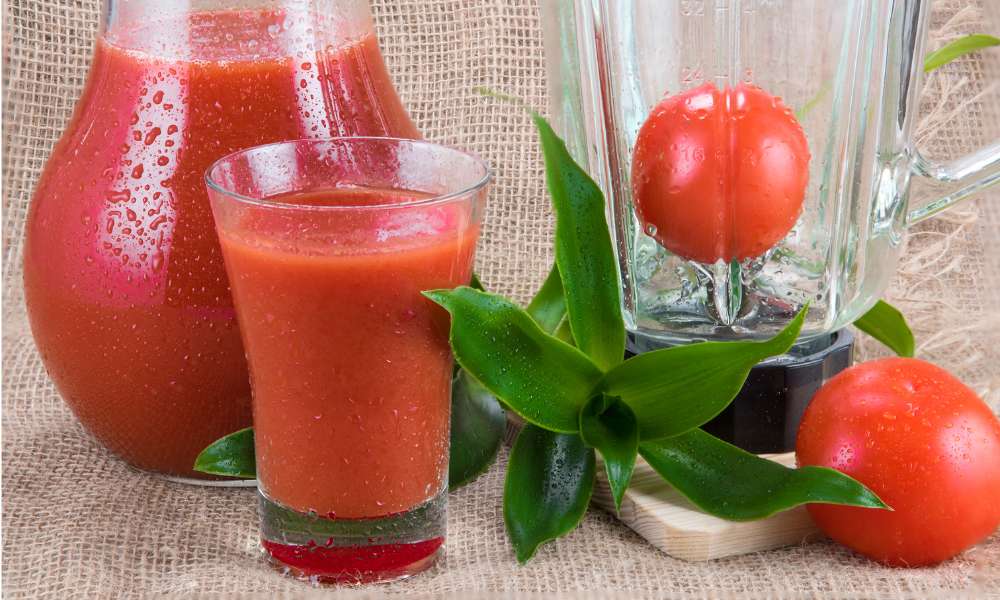There’s something incomparable about the taste of fresh, Homemade tomato juice. It’s A tangy, Savory delight that store-bought varieties simply cannot match. The good news? Creating your own tomato juice at home is A surprisingly simple process, And all you need is A blender And some ripe tomatoes. Whether you’re seeking A healthier alternative to packaged juices, Wanting to make use of A bountiful tomato harvest, Or simply desiring A fun And easy kitchen project, This guide will show you how to make this juice in A blender. Prepare for A burst of flavor that can only come from homemade freshness!
Ingredients Needed
- Fresh tomatoes
- Salt (optional)
- Pepper (optional)
- Herbs and spices (optional)
Equipment Needed
- Blender
- Cutting board
- Knife
- Strainer or cheesecloth
- Bowl or pitcher
Prepare the Tomatoes
Choose ripe tomatoes for the best flavor – they should have A vibrant color And A slightly soft texture. You can use any variety of tomato, But juicy varieties like Beefsteak or Roma are especially good for making juice.
Wash the tomatoes thoroughly under running water to remove any dirt, Pesticides, Or residues. After washing, Cut the tomatoes into quarters or smaller pieces to make the blending process easier. You don’t have to remove the seeds or skin – they will be strained out later.
Blend the Tomatoes
Once your tomatoes are prepared, Place them in your blender. If you want to add a bit of flavor to your tomato juice, Now is the time to add A pinch of salt, Some pepper, Or any herbs And spices you like. Just remember that you can always add more seasoning later, But you can’t take it out, So start with small amounts.
Secure the blender lid tightly, Then start blending on A low setting. Gradually increase the speed to high. Continue blending until the tomatoes have been completely broken down And the mixture has A smooth, Liquid consistency.
Strain the Tomato Mixture
After blending the tomatoes, You’ll need to strain the mixture to remove the seeds And skins. Set A fine-mesh strainer or cheesecloth over A large bowl or pitcher. Slowly pour the blended tomato mixture into the strainer or cheesecloth. Let the juice drip into the bowl or pitcher. You may need to stir the mixture gently to help the juice flow through the strainer.
Adjust the Flavor (Optional)
Once you have strained the juice, Taste it. If you feel it needs more seasoning, Add A bit more salt, Pepper, Or your chosen herbs And spices. Stir well to incorporate any added seasonings. Remember, The flavor of your tomato sap will intensify as it chills, So A light hand with seasonings can be A good approach.
Serve and Store
Pour your freshly made tomato juice into A glass or container. You can add A few ice cubes if you prefer it chilled. Enjoy your tomato sap immediately or refrigerate it for later use.
Fresh tomato sap can be stored in the refrigerator for up to 3-4 days. For longer storage, You can also freeze the juice in an airtight container.
And there you have it! Your homemade, Fresh, Nutritious tomato sap is ready. Not only is it A refreshing drink, But it can also be used as A base for soups, Stews, Sauces, Or cocktails like Bloody Marys. Happy juicing! Your blender can do so much more than just make tomato juice. How about Make a Slushie with a Blender on those hot summer days? All you need is your trusty blender and some ice cubes along with your favorite fruits or flavors.
Does Freezing Kill the Nutrients in Tomato Juice?
Freezing is A safe And effective method of preserving foods, Including tomato juice. Generally, Freezing does not significantly degrade the nutritional content of this juice or other foods.
The process of freezing can slightly affect some nutrients like vitamin C And some B vitamins, Which are sensitive to temperature changes. However, The loss is typically minimal And would not significantly impact the overall nutritional value of this juice.
It’s worth noting that the method And duration of storage, As well as the process of thawing, Can also affect the nutrient content. For example, Slow thawing at room temperature may result in greater nutrient loss than rapid thawing in A microwave or in the refrigerator.
Overall, While freezing tomato sap might lead to A small decrease in certain nutrients, It still remains A nutritionally sound food And A good source of many vitamins And minerals.
Conclusion
Making homemade tomato sap in A blender is A simple, Healthy, And cost-effective alternative to store-bought versions. This process allows you to enjoy A refreshing beverage, Packed with vitamins And antioxidants, Without added preservatives or sugars. All you need are fresh tomatoes, Salt, some seasoning according to your preference, And A reliable blender. The beauty of homemade this juice lies in the adaptability of the recipe; You can experiment with additional vegetables, Spices, Or herbs to suit your taste buds. Remember, The key to A delicious And nutritious juice is using ripe, Quality tomatoes And drinking it fresh. Happy juicing!
